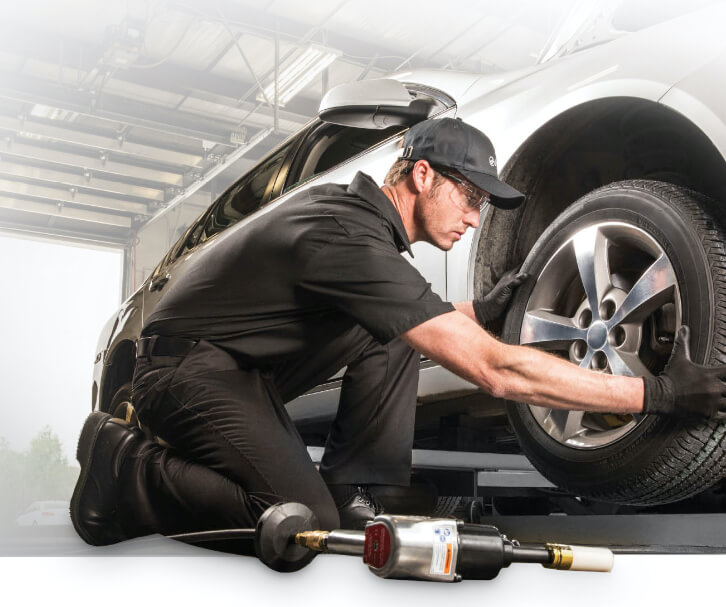Improve Your Drive: Top-Notch GMC Tires Service at Morris Tires
Improve Your Drive: Top-Notch GMC Tires Service at Morris Tires
Blog Article
Tire Solution: The Influence of Weather
When it comes to guaranteeing optimal efficiency and safety and security on the roadway, recognizing the effect of weather on tire solution is essential. From scorching warmth to icy roads, each climate element can dramatically affect tire performance and general driving experience. By delving into the results of varying climate problems on tires, motorists can gain useful insights that might boost their lorry's efficiency and longevity. In this discussion, we will check out the complex relationship in between climate condition and tire service, clarifying the relevance of weather-specific tire maintenance methods and factors to consider.
Warm and Tire Performance
When subjected to high temperatures, tires experience modifications in performance that can substantially impact car safety and security and handling. The warmth generated from long term driving or warm weather problems creates the tire rubber to soften, leading to lowered step life and raised wear.

Winter Impacts
Winter conditions can have a significant influence on tire performance and safety and security. As temperature levels decrease, tire rubber can harden, resulting in decreased grip on icy or snow-covered roads. In winter, tires may also lose air stress a lot more rapidly, which can influence taking care of and fuel performance. In addition, cool temperatures can create tire sidewalls to tense, enhancing the risk of damages from holes or various other road threats.
To alleviate the effects of winter on tires, it is essential to regularly check tire pressure and inflate them to the maker's advised levels. Making use of winter season or all-season tires made for cold climate conditions can also enhance traction and grasp on icy or snowy roads. Correct tire upkeep, consisting of regular inspections for wear and damages, becomes much more essential throughout chillier months to make certain optimal efficiency and safety and security.
Rainy Issues Effect
Throughout stormy problems, tire efficiency and safety and security can be considerably influenced by the wet road surfaces and decreased visibility. The walk pattern of tires plays an important duty in preserving grip on wet roadways. Tires with damaged treads are extra vulnerable to hydroplaning, where a layer of water develops in between the roadway and the tire surface, causing loss of grip. To fight this, chauffeurs should on a regular basis inspect their tires for ample tread deepness and take into consideration investing in tires particularly developed for wet problems.
Moreover, stormy weather condition can also lower presence, making it challenging for chauffeurs to see the road ahead plainly (GMC Tire Service). In such conditions, it is vital to readjust driving rates as necessary and keep a risk-free complying with range to allow for abrupt stops. Correctly filled with air tires can additionally help in keeping control on damp roads by giving much better handling and grasp
Snow and Tire Safety
Snow-covered roadways pose one-of-a-kind challenges for motorists, emphasizing the relevance of proper tire selection and maintenance. When driving in snowy problems, having the ideal tires can make a considerable difference in security and efficiency. Wintertime tires are created with unique rubber compounds and step patterns to offer far better grip on snow and ice contrasted to all-season tires. The much deeper treads and sipes of winter months tires help grip the road much better, minimizing the risk of moving and i loved this sliding.

In addition, drivers must consider setting up tire chains in severe snowy conditions. Tire chains offer extra grip by gripping the snow and ice, improving stability and control. Nonetheless, it is very important to adhere to maker guidelines when mounting and making use of tire chains to stop damage to the tires and car. By picking the ideal tires, maintaining appropriate rising cost of living, and considering additional traction help like tire chains, motorists can improve their safety when browsing snow-covered roads.
Weather-Related Tire Upkeep
Weather-related tire upkeep includes a range of methods intended at making sure optimal tire function and long life in different weather scenarios. One crucial element of weather-related tire maintenance is tire stress law. Evaluating tire step frequently and changing tires when tread wear gets to a certain depth is crucial for keeping traction and stability in unfavorable climate.
Verdict
Finally, weather have a substantial influence on tire efficiency and safety. From warm affecting tire stress and use to cold climate lowering go to these guys traction, it is necessary to consider the climate when keeping and using tires. Stormy conditions can reduce grip and lead to hydroplaning, while snow can enhance the risk of mishaps if tires are not appropriately geared up. Weather-related tire upkeep is essential in making sure optimal performance and security when driving.
In this conversation, we will certainly check out the detailed partnership between climate problems and tire service, dropping light on the importance of weather-specific tire maintenance practices and considerations.

Report this page